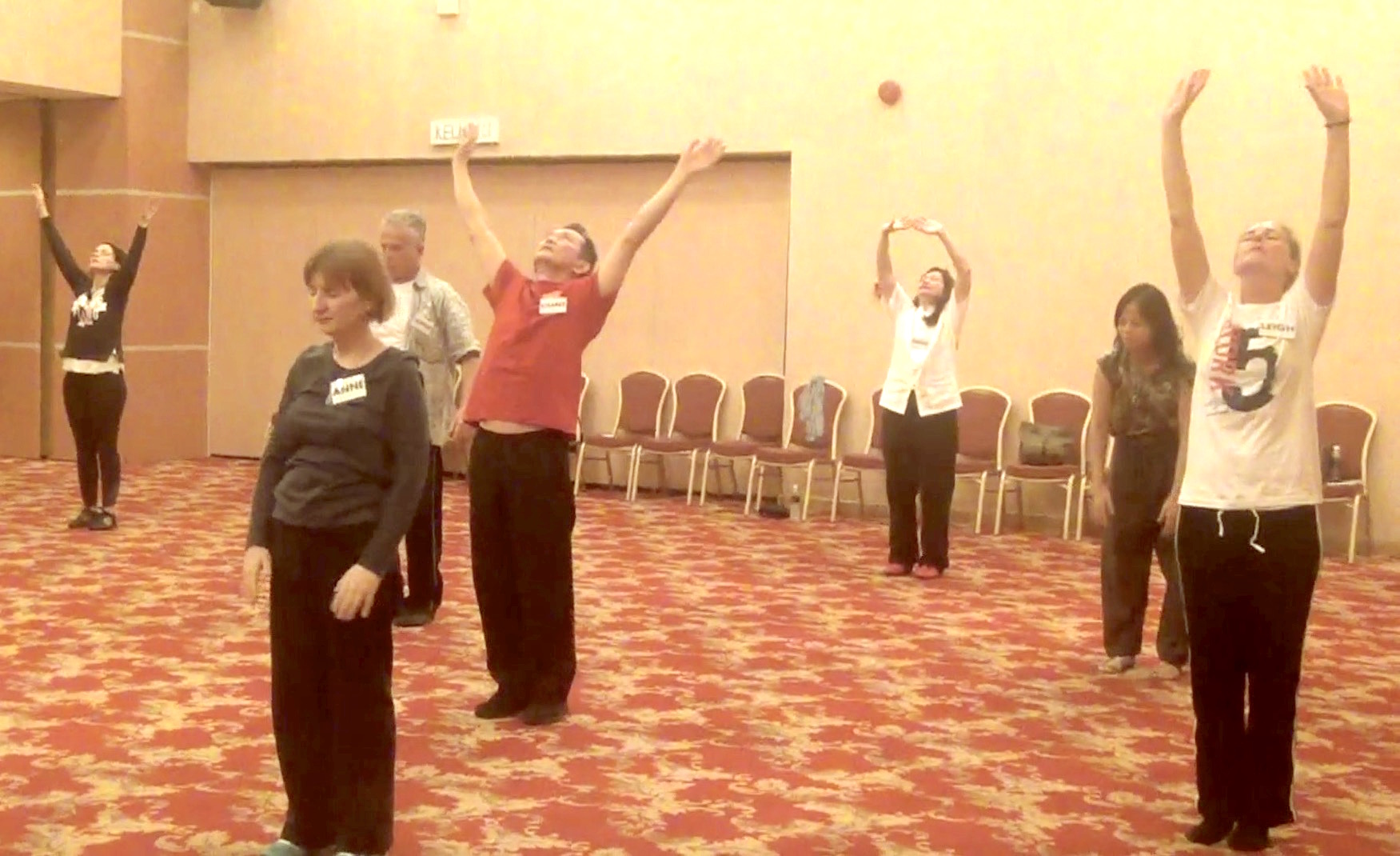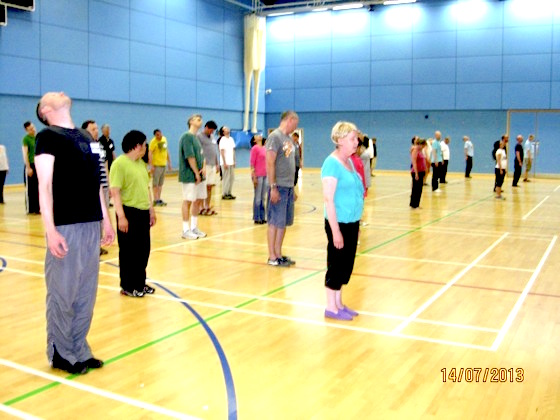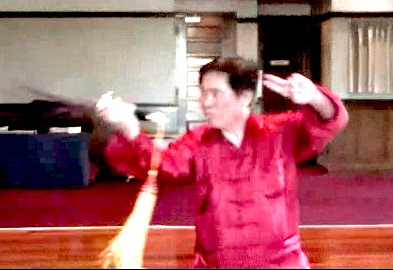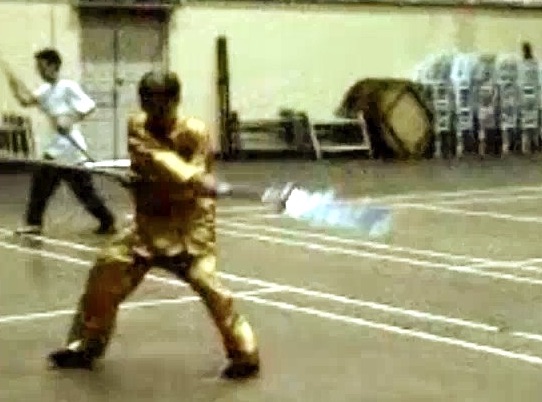SELECTION OF QUESTIONS AND ANSWERS
APRIL 2018 PART 2

Practicing chi kung learnt in our school will make practitioners happy and find meaning in life. One can easily check the truth of this claim by asking our students.
Question 1
I have a hard time finding meaning in this phenomenal realm. I am practicing chi kung daily but I am not sure if I will ever find complete satisfaction in ordinary experiences.
What would be the best to do in my case if I want to find absolute freedom and bliss?
— Jussi, Finland
Answer
Your case reminds me of what somebody told me many years ago.
If you want to be happy for a day, take a nap. If you want to be happy for six months, get married. If you want to be happy for a year, go for a holiday. If you want to be happy for life, be kind.
Be kind to parents if you are so lucky to have them with you. Be kind to your wife and children if you have them. Be kind to your friends, and be kind to strangers. Not only you will not be depressed, you will be happy for life.
Question 2
Should I attend more courses or just carry on doing "Lifting the Sky" or other Lohan exercises?
Answer
Those who practice our chi kung, are happy and find meaning in life. These are not empty words. You can easily check my statement by e-mailing our Shaolin Wahnam Family members, irrespective of whether you know them personally.
If you practice our chi kung daily and still are unhappy and do not find meaning in life, there are three possibilities.
- You practice wrongly.
- You just practice the outward form of our chi kung exercises mechanically, and you do not follow the philosophy taught in our school. Basically our philosophy is to be free and kind.
- You have over-trained.
If you have practiced wrongly, taking courses from me or our instructors will help.
It is likely that you perform the outward form of our chi kung exercise but miss the essence. Do you, for example, practice the Ten Shaolin Laws, and do you smile from your heart each time you start your practice? These are very important points, more important than which chi kung exercises you practice.
Your problem is not which chi kung exercises you practice, but how you practice these exercises. It is likely that you only perform the outward form and miss the essence.
"Lifting the Sky" is an excellent exercise, but if you miss the essence, like many people do, the exercise does not help you.

A Bone Marrow Cleansing class in England
Question 3
I am interested in Sinew Metamorphosis and Bone Marrow Cleansing because the latter really opened my chi flow during your class in England. I don't know if it was the exercise or you opening my points.
Answer
Sinew Metamorphosis and Bone Marrow Cleansing are advanced chi kung exercises. They are not suitable for you. You should focus on simpler exercises like Eighteen Jewels, Five-Animal Play and Eighteen Lohan Hands. These simpler exercises will make you happy and find meaning in life, which are your immediate problems.
During the UK Summer Camp in England, they were the exercises that opened your energy points and set your chi flowing. Without false modesty, I was (and am) a good teacher. I could employ those exercises to open your energy points and set your chi flow.
Question 4
I have regrettably forgot how to do Bone Marrow Ceansing and Metamorphosis properly so I am not practicing them.
Answer
As I have said earlier, Bone Marrow Cleansing and Sinew Metamorphosis are advanced chi kung exercises with advanced chi kung skills. You should focus on simple exercises in the course, "Generating Energy Flow", to open your heart and generate your energy to flow. If you can do that, you will be happy and find meaning in life.

It needs great skill to use a Chinese sword
Question 5
Do you think that the upcoming Winter Camp in Finland would benefit me? I just want to find lasting peace. I have been depressed for so long.
Answer
The Winter Camp in Finland is excellent for you. You should not miss it.
You should not just attend the Winter Camp, but join the regular class conducted by Sifu Markus Kahila or Sifu Nessa Kahila in Finland. If you do not live in Helsinki where they teach, it is worth your while to travel to them.
It is not sufficient for you to attend just one UK Summer Camp. By the way, you were not present when I last visited Finland in 2016.
You should join a regular class. You live in one of the richest countries in the world.. You must make an effort to be happy and find meaning in life.
Question 6
How would a women who practices Shaolin kung fu be able to use weapons that are considered in the category of "heavy"? Wouldn't she be at a natural disadvantage by doing so?
— Nareshwar, India
Answer
If all other things were equal, a woman would be at a disadvantage compared to a man if she uses a heavy weapon. But other things are not equal. If the woman is skillful or has internal force, she can easily beat the man who is unskilled and has no internal force.
In kungfu history, no women of repute used a heavy weapon. The most common weapon used by women was the Chinese sword. If all other things were equal, a woman using a sword had an advantage over a man using a sword.

It is disadvantageous for a woman to use a heavy weapon, like a Guan Dao
Question 7
From what I understand there are two categories of styles when it comes to Chinese Kung Fu -- external and internal. Could a women still be proficient at an external style of Kung Fu, even though she is at a natural disadvantage when compared to a man?
Answer
The woman would not be as proficient, unless her opponents are far below her in kungfu skills and internal force. Even if a woman is very skillful and has a lot of internal force, it would not be wise of her to use a heavy weapon, which is against her nature.
As an analogy, suppose you don't like motor traffic, but you choose to be a bus driver. Or you are slim and elegant, but you choose to wear clumsy and over-sized clothing.
Question 8
The Chinese straight sword is compared to the European rapier a lot, as both being categorised as light, fast weapons. In your opinion, do you feel that these two swords bare a resemblance?
Answer
No, these two weapons do not have a resemblance. A rapier is used for thrusting. Besides, thrusting, a Chinese sword is used in many other techniques, like slashing, cutting and chopping. Many rapiers have protection for the holder's hand, but a swordsman can slash his arm or leg, or even get to his back to attack him.
I recall a friendly match I had more than 40 years ago against a good fencer. He used a rapier and I used a staff. Although I could hit him a few times, and he could not hit me at all, my knowledge of and performance in weapons were far inferior then. With my enhanced knowledge and skills now, and presuming he has not improved, I believe I could defeat him with a Chinese sword in less than 10 exchanges. At that time, we had more than a hundred exchanges.
Question 9
The rapier is often seen at times being paired with a dagger to help the user in combat. Is this also true of the Chinese Jian? Is a dagger or something of such used in the other hand of the exponent?
Answer
This is not true of the Chinese jian, or Chinese sword. A swordsman is very skillful. It needs a lot of skills to use a Chinese sword well. Holding a dagger in the other hand shows that the swordsman is not skillful. Moreover, holding a dagger in the other hand would interfere with the performance of the sword.
A skillful swordsman can use his sword like a dagger. There are also many sword techniques he can use if his opponent is close by.
There is no need for a swordsman to stab his opponent with a dagger. He can strike him with his bare hand using internal force. If he had no internal force, he can attack the opponent's eyes, throat or groin -- even from behind. Holding a dagger is a hindrance.
LINKS
Selected Reading
- The Unbelievable Intensive Chi Kung Course
- Weapon Training in Daily Life and Martial Development
- Learning from a Master has No Comparison
- Eight Distilled Shaolin Combat Sequences
- Kanchipuram, the Birth Place of Bodhidharma
